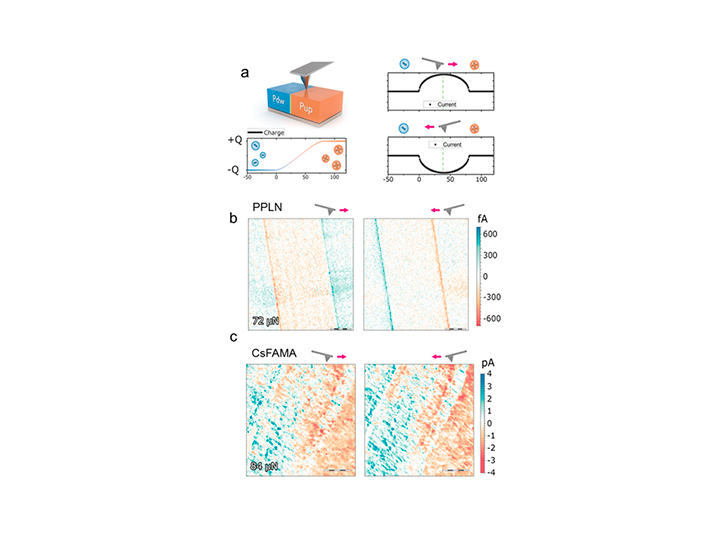Ferroelectric materials are characterized by a switchable macroscopic electric polarization. A wide number of perovskite oxides have ferroelectric behavior. Whether or not also lead halide perovskites are ferroelectrics has been a matter of debate since their breakthrough in photovoltaics reaching conversion efficiencies in excess of 25% in a couple of years of intense research. Although the reported efficiencies of perovskite solar cells approach the theoretical limit, the potential role of ferroelectricity in the photovoltaic behavior is still controversial. It has been reported, for instance, that ferroelectric polarization may favor charge generation, thus leading to enhanced photovoltaic performance but it was also suggested that ferroelectricity might cause chemical segregation, which is detrimental for perovskite solar cells. In general, the high electronic and ionic conductivity in lead halide perovskites make the examination of ferroelectricity extremely complicated using conventional techniques, such as piezo-response force microscopy. Experimental results from conventional methods often lead to misinterpretation.
To circumvent the above mentioned problems, we have developed a novel scanning-probe microscopy technique, direct piezoelectric force microscopy (DPFM), to examine the ferroelectric response of halide perovskites most commonly used in photovoltaics. In contrast to conventional techniques, DPFM is to a large extent free of artifacts. By comparison with well-known ferroelectric materials (see Fig. 1), we demonstrate that lead halide perovskites films are ferroelectricity free. Hence, further work is necessary to pinpoint the physical reasons for the unprecedented success of this new class of photovoltaic materials.
Reference
